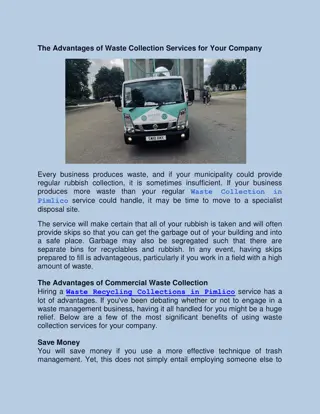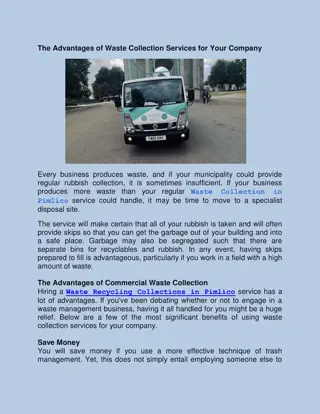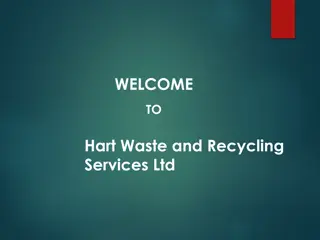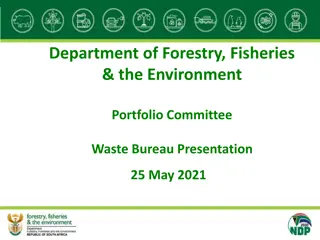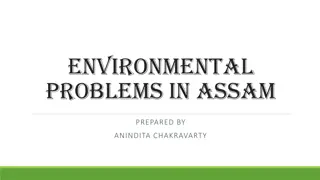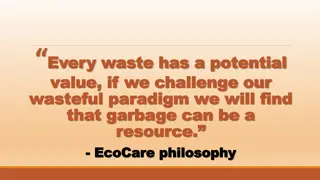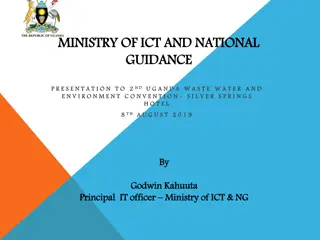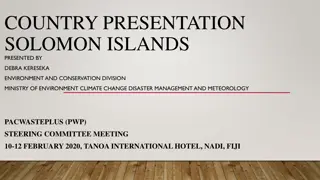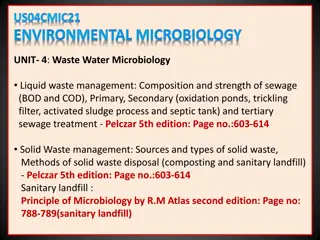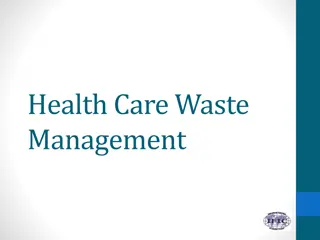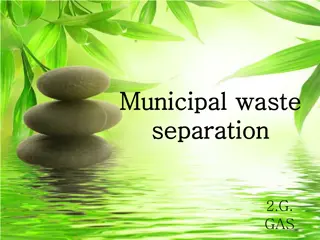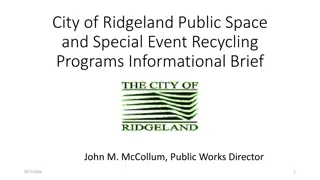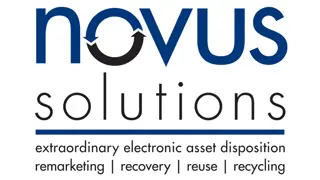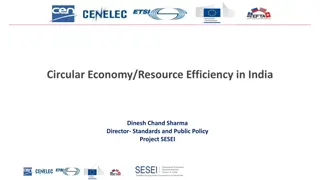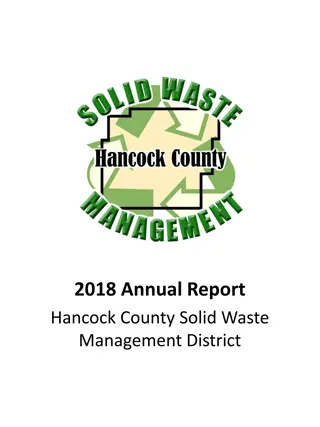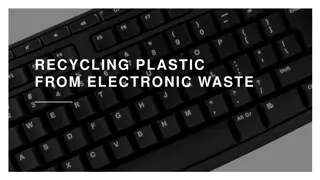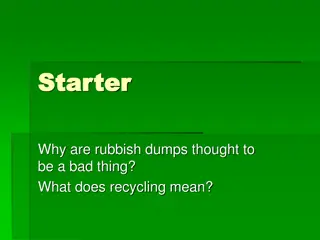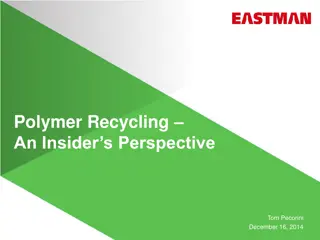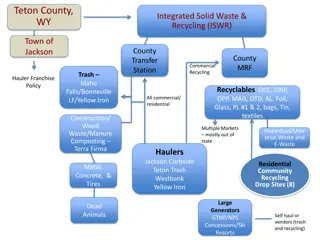Who is DWMR? - A Brief Overview of Sacramento County's Waste Management & Recycling Services
Discover the history and operations of DWMR, responsible for managing curbside collection, recycling, and disposal in Sacramento County. Learn about their initiatives, contracts, and preparation for upcoming regulations like SB 1383 to handle organic waste and single-stream recyclables efficiently.
Uploaded on Aug 31, 2024 | 1 Views
Download Presentation

Please find below an Image/Link to download the presentation.
The content on the website is provided AS IS for your information and personal use only. It may not be sold, licensed, or shared on other websites without obtaining consent from the author. Download presentation by click this link. If you encounter any issues during the download, it is possible that the publisher has removed the file from their server.
E N D
Presentation Transcript
Who is DWMR? Single Stream Recyclables A Brief History New SSR Contracts Organics What is organic waste? SB 1383 Draft Regulations Potential Impacts What DWMR is Doing in Preparation? 2
Curbside collection from 153,000 single family/duplex homes in unincorporated areas of Sacramento County. 264 full time employees and 35 part time employees Disposal Facilities Kiefer Landfill North Area Recovery Station Residential services: Weekly collection of garbage, used motor oil, used oil filters and cooking oil Bi-weekly collection of recyclables Bi-weekly collection of green waste One no-cost calendar year bulky waste pickup by appointment Illegal dumping clean up Monthly street sweeping of residential areas using an outside contractor 3
3 bin system implemented in summer 1991 Single Stream Recycling implemented in April 1998. Materials were processed under a fixed price structure from 2006 until 2013. In March 2013, two new processing contracts based on a market driven pricing structure with a floor price of $15/ton. 2017 China begins enforcement of their National Sword policy, limiting import of many SSR materials. Fall 2017 - Processing contracts terminated by processors due to the volatility and uncertainty of the recent market conditions 2018 operated under short-term processing agreements 4
January 2019 Two long-term processing contracts executed featuring market pricing and no floor prices Recycling Industries (Sacramento) Three year contract for up to 750 tons per month California Waste Recovery Systems (Galt) 10 year contract for up to 4,000 tons per month Kept plastics #1 - #7 Removed aseptic containers (milk/broth/juice cartons) Tipping at Recycling Industries and the L&D Transfer Station Additional total cost per year = $2,5000,000 Additional cost per month per account = $1.36 5
Curbside Enhancement Committee Formed to reduce SSR contamination through customer outreach and education Revamped service guide and cart tags Deployed route auditors to inspect and tag carts Conducted studies to evaluate the effectiveness of traditional outreach, can tagging, and deployment of new carts Formulated an outreach strategy focusing on reaching customers multiple times through various media 7
Waste Originated from Living Organisms Green Waste Wood Waste Food Waste Sewage Sludge/Biosolids Manure Paper/Cardboard- not required in green cart Organic Textiles/Carpets- not required in green cart 8
Primarily targets reducing methane emissions State wide goals based on 2014 organic waste disposal rates: 2020 50 percent organic waste reduction from landfills 2025 75 percent organic waste reduction from landfills 2025 20 percent increase in recovery of edible food that is currently disposed Jurisdictions mandated to: Collect residential and commercial source separated organics on or after 2022 Implement an edible food recovery program on or after 2022 9
SB 1383 draft regulations require weekly collection of organics. Currently green waste is collected every other week. Weekly collection will require a significant expansion of collection fleet. Discussing the option to collect refuse every other week to reduce costs. 10
Collected organic waste will require different handling procedures than those currently used for green waste. Currently, DWMR receives and transfers green waste using outdoor facilities. Adding food waste to collected green waste will require receipt and transferring at indoor facilities. Significant improvements to the County s transfer facilities. 11
No Solid Waste Facility permitted in Sacramento County to process organic waste containing food waste. DWMR currently ships approximately 75% green waste for composting to Chico, Ca. Request for Proposals (RFP) issued for organics diversion services- responses due in May 2019. Based on regional surveys, we anticipate the cost for transportation and processing will increase significantly. 12
Draft regulations place significant responsibilities on the County: Robust inspection, record keeping, and enforcement on all generators. Capacity planning of organics processing infrastructure, conducting quarterly contamination reviews of all organic collection routes, and annual inspection of major food waste generators. Significant outreach efforts to educate generators. County will be the designated agency for organics capacity planning County-wide, including incorporated as well as unincorporated areas. 13
SB 1383 draft regulations require jurisdictions to adopt ordinances and impose penalties that are equivalent to or stricter than prescribed penalty amounts. No threshold or level of contamination given in regulations that constitute a violation. 1st violation -$50-$100 per day 2nd violation - $100-$200 per day 3rd violation -$250-$500 per day Up to $10,000 per day for jurisdictional violations 14
Researching organics collections best practices Solicited and received Letters of Interest from organics processors Conducted an greenwaste characterization analysis Analyzing draft SB 1383 regulatory language Issued a Request for Proposals for organics diversion services with the Cities of Sacramento and Folsom Preparing for major routing and fleet maintenance analyses to support decision making Preparing for a rate increase analysis and request 15
Chinese policy has significantly impacted the recycling materials market and the price the County pays for SSR processing. Significant changes in the way organics are collected and processed are on the way. Organics collection will likely occur weekly, requiring substantial new staff and equipment Transfer facilities will require significant improvements. New composting and digester facilities will need to be sited and permitted. Based on preliminary estimates, DWMR projects rate increases in the range of $10 to $15 per account per month for changes in the SSR and organic recycling programs. 16

 undefined
undefined















